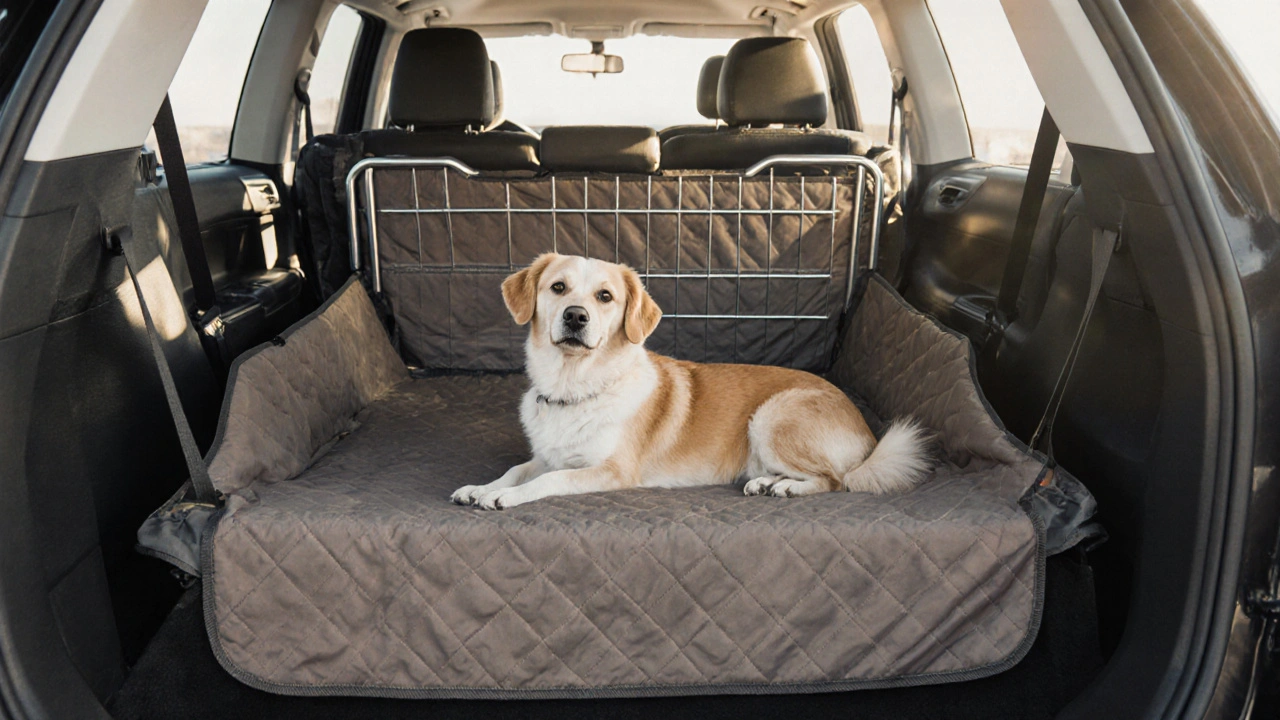When you take your dog on road trips, a pet car barrier, a physical divider installed between the back seat and cargo area to keep pets contained during travel. Also known as dog car partitions, it’s not just about keeping fur off your upholstery—it’s about keeping your pet from becoming a distraction or a projectile in a sudden stop. Many drivers don’t realize how dangerous it is to have an unrestrained pet in the front seat or roaming freely in the back. In a crash at just 30 mph, a 20-pound dog can hit with the force of 600 pounds. That’s why pet car barriers aren’t optional for safety—they’re essential.
These barriers come in different forms: metal mesh grids that attach to headrests, heavy-duty nets with tension straps, or rigid plastic panels that fit specific car models. Some even double as cargo organizers, letting you store leashes, water bowls, or dog toys behind the barrier without them sliding into the cabin. Brands like PetSafe, Sherpa, and SleepyPod make models that work with SUVs, hatchbacks, and even trucks. You don’t need a luxury vehicle to use one—most barriers fit standard 2018 models like the Honda CR-V, Toyota RAV4, or Ford Escape. What matters is proper fit and secure installation. A loose barrier is worse than none at all.
It’s not just about safety. A pet car barrier reduces stress for your dog too. Animals feel more secure when they’re not bouncing around. It also stops them from jumping out when you open the tailgate, which happens more often than you’d think. And if you’ve ever had to clean dog hair out of seat cracks or deal with muddy paw prints on leather, you know how much time and money these barriers save over time.
While some people use harnesses or crates, barriers offer a middle ground: they’re less confining than a crate, more secure than a harness alone, and work whether your dog is sitting, lying down, or standing. They also let you keep the back seat open for other passengers or gear while still keeping your pet contained. If you’ve ever tried to load groceries while your dog tries to lick your face from the back seat, you know this isn’t just convenience—it’s sanity.
What you won’t find in most reviews are the hidden flaws. Cheap plastic barriers can crack in cold weather. Mesh nets stretch over time and lose tension. Always check for crash-tested certification, even if it’s not required by law. Look for models that meet ASTM or ASTM F2088 standards. And never rely on a barrier alone in a high-speed collision—it’s a supplement to a proper pet seatbelt or harness, not a replacement.
By 2018, nearly every major automaker had started including pet-friendly features in new models—reinforced cargo floors, easy-clean materials, even built-in tether points. But if you own a 2018 car without those features, adding a solid pet car barrier is the smartest upgrade you can make. It costs less than a tank of gas, takes minutes to install, and could save your dog’s life.
Below, you’ll find real-world guides on how to choose the right barrier for your vehicle, what to avoid when shopping online, and how to pair it with other safety gear to make every ride smoother—for you and your pet.
Posted by
Liana Harrow
15 Comments

Pet seat covers and barriers protect your car from mess and keep your pet safe during travel. Learn how to choose the right gear and avoid common mistakes.
read more